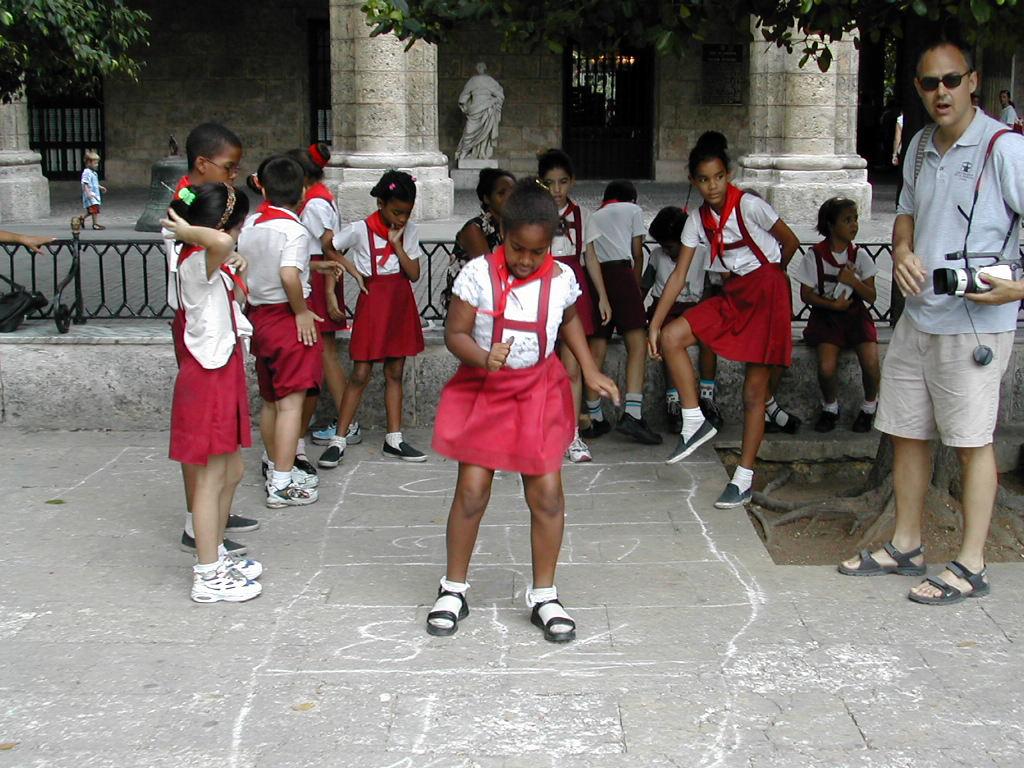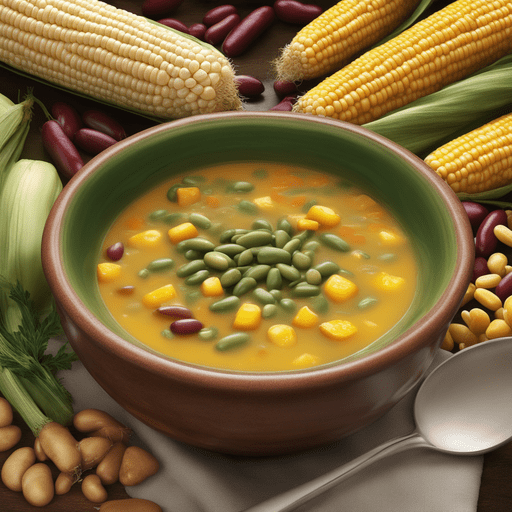Discover the hidden benefits of hopscotch! Unearth why it’s the ultimate brain-boosting game for kids. A must-read for all parents, Dive in now!

Table of Contents
Introduction
Hopscotch is a timeless game that brings back memories thanks to the rhythmic tapping of shoes on pavement, children’s exuberant laughter, and bright chalk designs made on the ground. Hopscotch, which has its roots in ancient civilizations and has been played around the world on all continents, is still one of the most cherished, adaptable, and widely available outdoor games. The joys it may bring are limitless, and all you need is a piece of chalk and an empty area of pavement.
It’s more than just a game to play hopscotch. It serves as evidence of the pervasiveness of play. No matter one’s ethnic background, there’s a good probability that they played hopscotch as a child. Evidence suggests that Roman kids played a variant of it, proving that it has existed for thousands of years. However, this game is not limited to history books or to one particular culture. It has changed, grown, and been recreated to reflect the universal human joy of play and simple pleasures.
While regional variations in the game’s regulations may exist, its basic premise is always the same: players hop or leap across a succession of squares or rectangles while attempting to complete the course without making any mistakes. The players’ allies include accuracy, balance, and dexterity, but also creativity and strategy, as the game can be played in a competitive or cooperative manner depending on the players’ preferences.
Hopscotch is not only fun, but it also has mental and physical health advantages. As they maneuver the patterned grid, kids gain coordination, balance, and motor skills. Furthermore, players develop their problem-solving abilities and adaptability by changing the game’s difficulty or adding new rules.
But beyond the specifics and advantages, hopscotch’s genuine magic rests in its capacity to unite people. It promotes interpersonal relationships, encourages healthy competition, and offers room for inventiveness. Hopscotch grids can be seen on city sidewalks, and playgrounds at schools often resound with children playing this classic game.
In this introduction, we will delve into the rich tapestry that is hopscotch, including its origins, variants, significance, and position among other traditional games played around the world. There’s always something new to learn about hopscotch, whether you’re exploring a treasured childhood memory or exposing the next generation to the delights of this straightforward yet intriguing game. Join us as we hop, skip, and leap across this game’s interesting environment.
Why has Hopscotch Been So Popular For So Long?
- Hopscotch is one of the few games that is played and recognized worldwide. Kids of all ages can play it thanks to its simplicity, and its rules are easily adaptable to players with different skill levels.
- Cognitive and Physical Advantages: In addition to being entertaining, hopscotch has a number of advantages. It supports the growth of motor abilities, hand-eye coordination, balance, and even fundamental calculations and planning.
- Needs Little Setup: All you need is a piece of chalk and a level surface. Due to its simplicity of setup, the game has become popular both in urban and rural areas all over the world.
What are the Origins and Variations of Hopscotch?
- Ancient Beginnings: The Romans are credited with the early versions of the game. Roman children mimicked soldiers, who hopped across grids to improve their agility.
- Global Reach: Hopscotch has various names and designs in different countries:
- France: Here it’s known as ‘marelle’ and sometimes features a spiral pattern.
- India: The game, referred to as ‘kith-kith’, often has a complex grid.
- China: Known as ‘tiao qi’ or ‘jumping chess’, it includes unique designs, sometimes with a semi-circular section.

How Do You Play Hopscotch?
- Laying Out the Court: Although regional variations may occur, a hopscotch grid is normally made up of a sequence of numbered squares and rectangles. Eight parts make up the conventional court.
- Tossing the Marker: Participants place a stone or marker on a square with a number. Hoping through the court while avoiding the marker’s square is the goal.
- Hopping Through: You must jump on one foot through single squares. Squares that are doubles (side by side) are crossed. The player must avoid stepping on the marker’s square or touching any lines.
- Recovering the Marker: The player must turn around and return after reaching the end of the grid while maintaining their balance and picking up the marker.
- Increasing Levels: As the game continues, the player tries to finish the course by placing the marker in each new square.
When did hopscotch start to gain popularity?
It is difficult to pinpoint a particular historical period given the long history of hopscotch’s popularity. However, it became quite popular in Europe during the Middle Ages and was frequently played in markets and along country roads. Urbanization, where kids in cities used sidewalks as playgrounds and chalked hopscotch grids, is responsible for the game’s current-day popularity.
Innovative Ways to Play Hopscotch: A Twist on a Classic
1. Math Magic Hopscotch
How It Works: Rather than the usual numbered squares, write basic math problems in each box. Players need to shout the answer as they hop on it.
Benefits: This fusion of math and physical activity makes learning more fun and encourages quick mental calculations.
2. Word Whiz Hopscotch
How It Works: Each square contains a letter. As players hop, they must come up with words starting with that letter.
Benefits: It improves vocabulary, spelling skills, and stimulates the language center of the brain.
3. Color Combo: Hopscotch
How It Works: Instead of numbers, paint the squares in various colors. Players then throw a dice that indicates which color to hop on next.
Benefits: It promotes color recognition and adds an unpredictable challenge to the game.
4. Global Grid Hopscotch
How It Works: Design your grid based on the map of a country or continent. As players land in different regions, they should name the capital or a fun fact about it.
Benefits: A playful approach to geography that makes learning about the world a fun time.
5. Musical Hopscotch
How It Works: Play music while participants hop through the grid. When the music stops, players freeze. The last person to land inside a square without touching any lines continues the game.
Benefits: This version hones listening skills and brings a rhythmic flair to traditional hopscotch.

6. Multi-Level Hopscotch
How It Works: Instead of a flat grid, create hopscotch on different levels or platforms, perhaps using cushions or flat stones.
Benefits: It challenges balance and motor skills even further. Also, it’s super fun!
7. Memory Match Hopscotch
How It Works: Each square has an image or symbol. Players have a set of cards with matching symbols. They draw a card and must hop to the matching square.
Benefits: It’s an excellent test of memory and adds an element of surprise to the game.
8. Fitness Fusion Hopscotch
How It Works: Along with numbers, add fitness instructions to some squares like “5 jumping jacks” or “3 squats.” When a player lands on such a square, they must perform the exercise.
Benefits: A splendid way to mix fitness with fun, ensuring kids get a wholesome workout.
9. Reverse Hopscotch
How It Works: It’s simple—play the game backward! Start from the top and go to the beginning.
Benefits: It’s a brain teaser, encouraging players to think and strategize in reverse.
10. Blindfolded Hopscotch
How It Works: The player is blindfolded and must rely on memory or directions from another player to complete the course.
Benefits: It enhances trust, hones listening skills, and tests memory.
Conclusion
Hopscotch is not just a game; it’s an evergreen canvas of creativity and learning. By putting innovative spins on this age-old game, you can ensure it remains a favorite for many more generations. So grab some chalk, gather around, and let’s give hopscotch the twist it deserves!
FAQs
Is hopscotch suitable for all age groups?
Absolutely! While it’s primarily a children’s game, even adults can enjoy and benefit from it.
Can hopscotch be played indoors?
Yes, with non-slip floor markers or even simple tape, hopscotch can be an indoor activity.
What if my child finds hopscotch too easy?
Encourage them to invent new rules, add challenges, or even blend it with other games.
Is hopscotch a group-only game?
While it’s fun in groups, solo players can also practice and create personal challenges.
How does hopscotch compare to modern video games?
While video games have their merits, hopscotch offers physical activity and direct social interaction, which most video games can’t replicate.
External Links
Further Reading: Wikipedia’s page on Hopscotch
Thank you for reading “Why Hopscotch is the Ultimate Brain-Boosting Game for Kids”. Interested in more insightful pieces? Check out my other blogs here. Your support keeps the content flowing!

